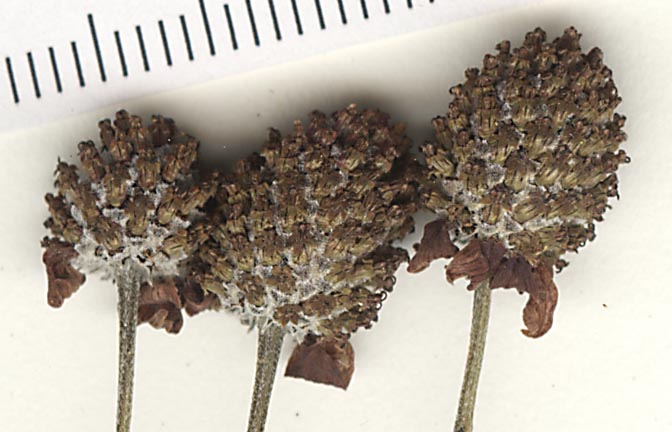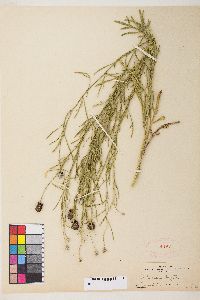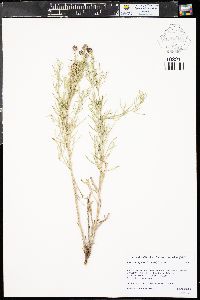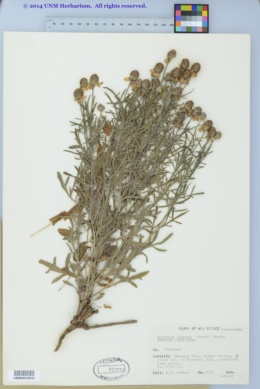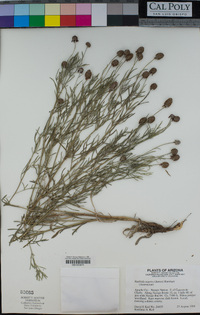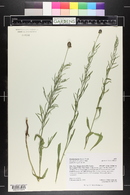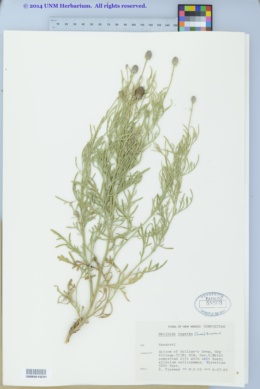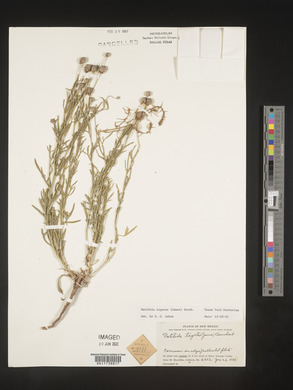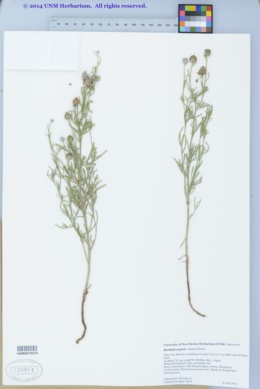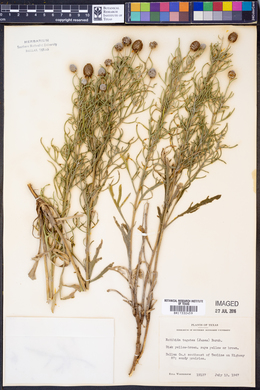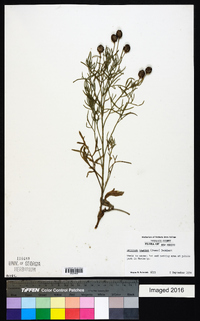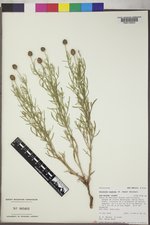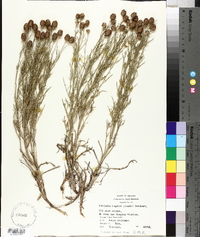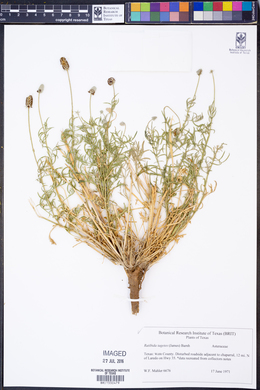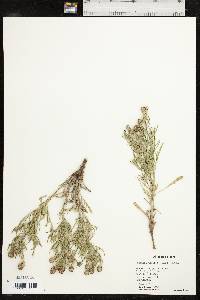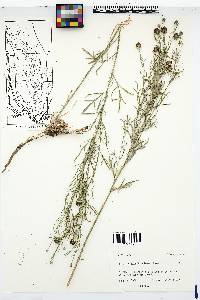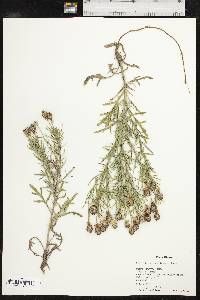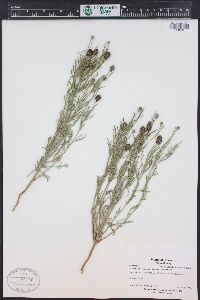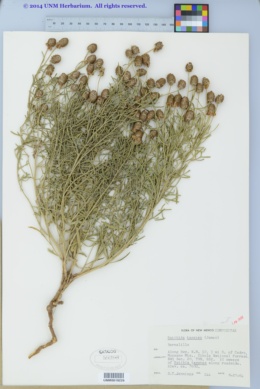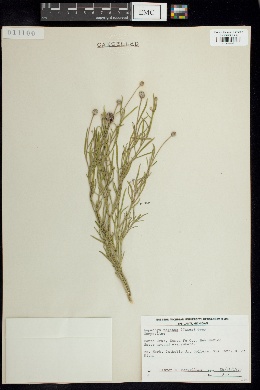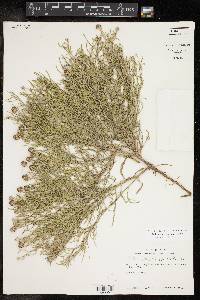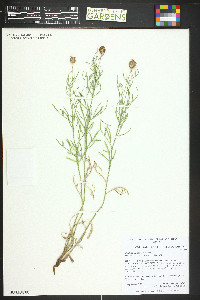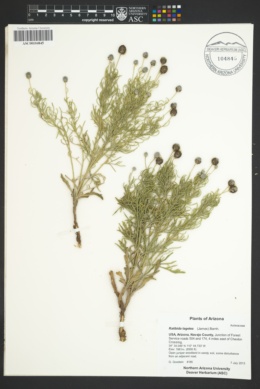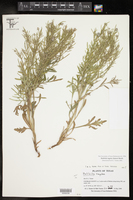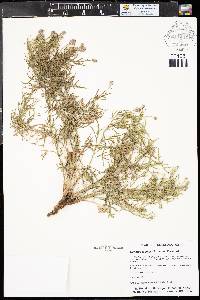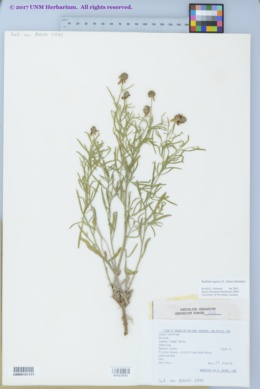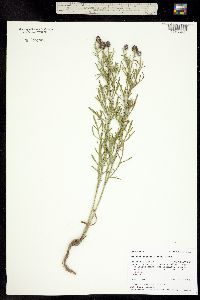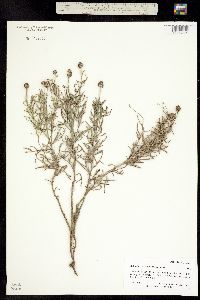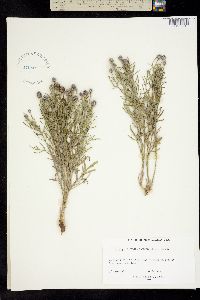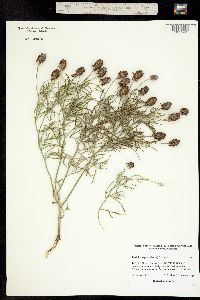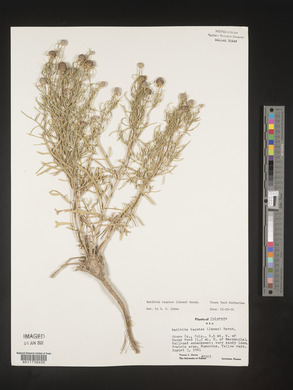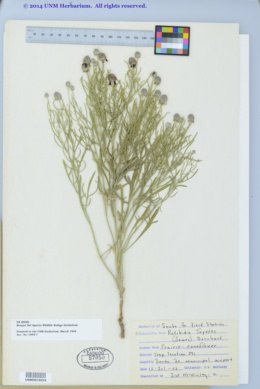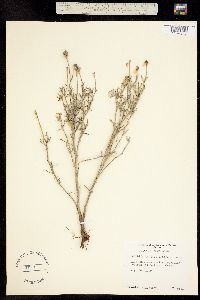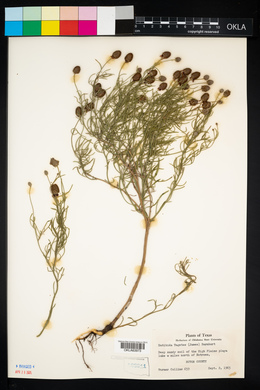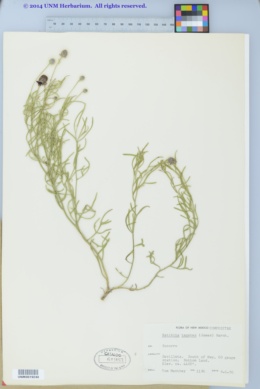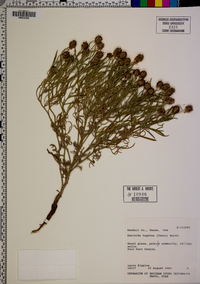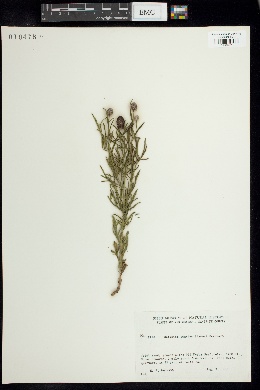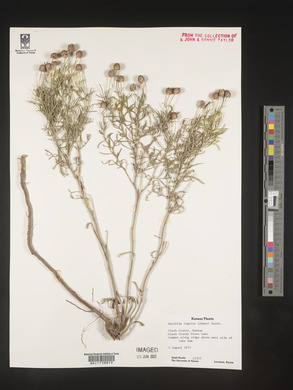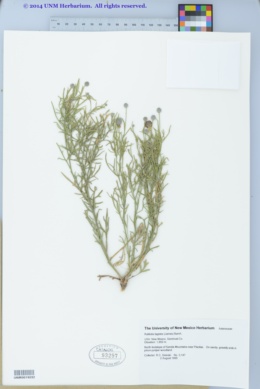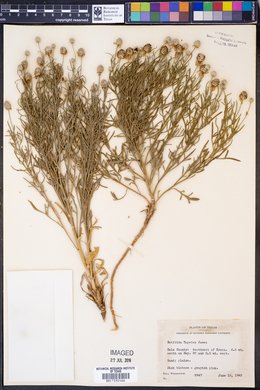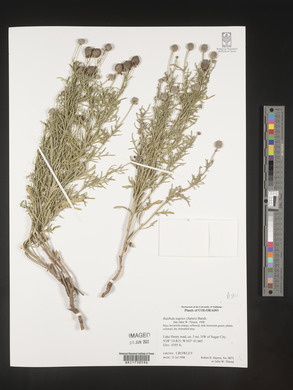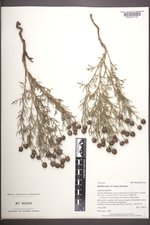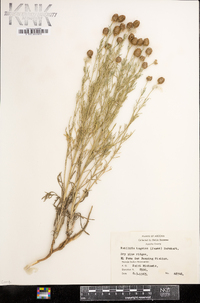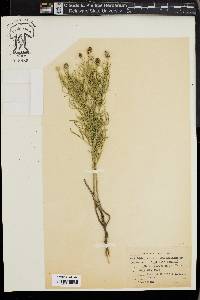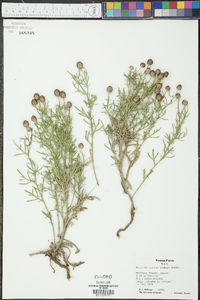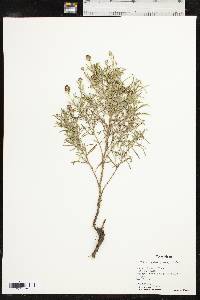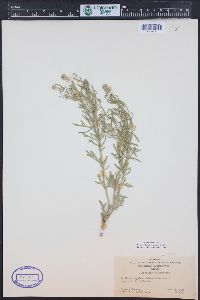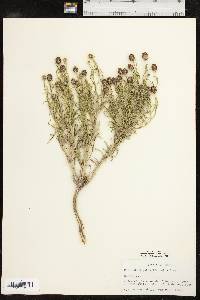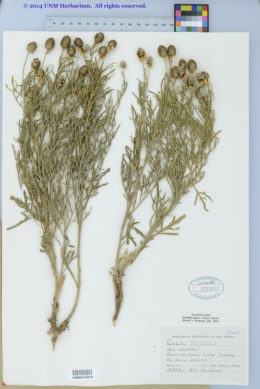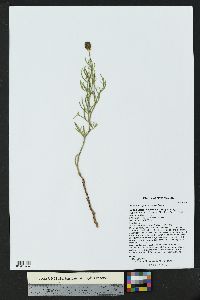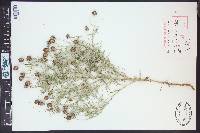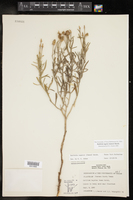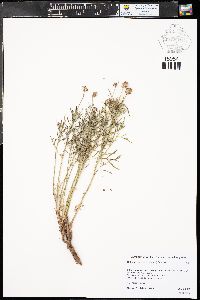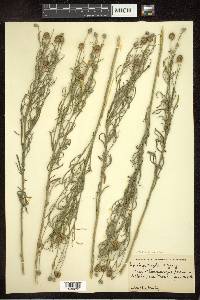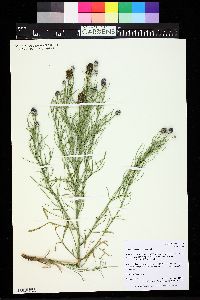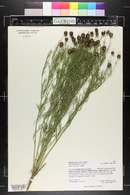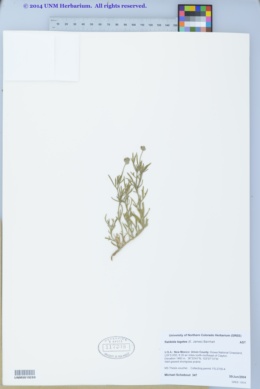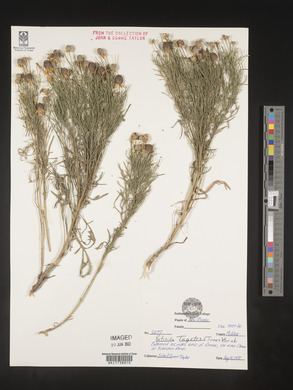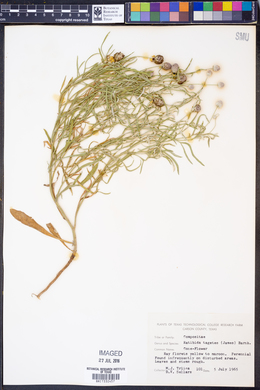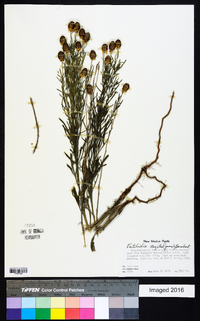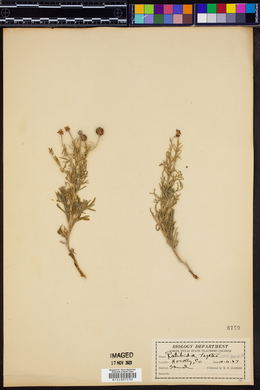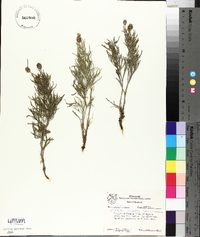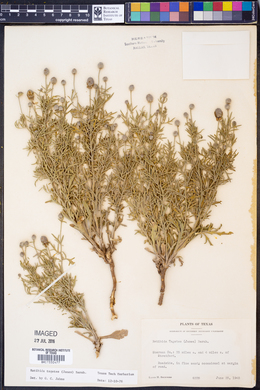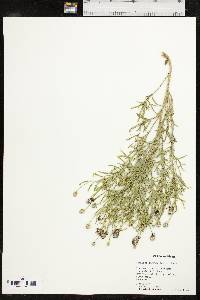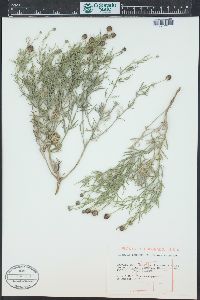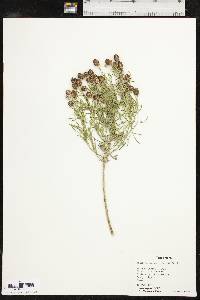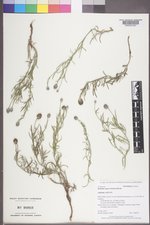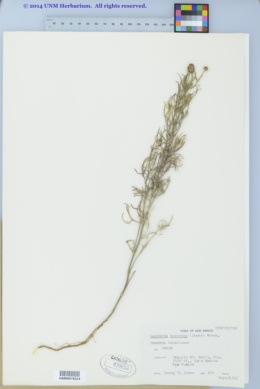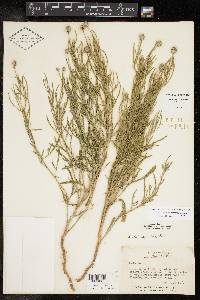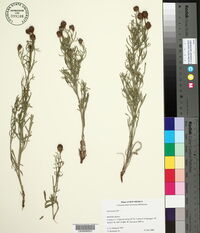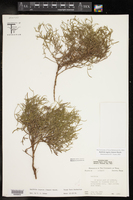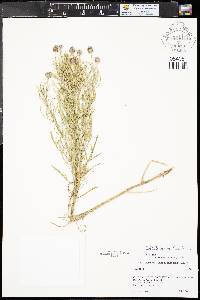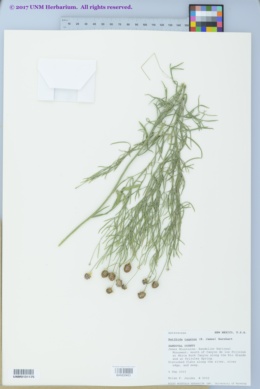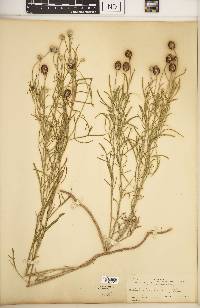Ratibida tagetes
|
|
|
|
Family: Asteraceae
Green Mexican-Hat, more...green prairie coneflower, shortray praireconeflower, shortray prairie coneflower
[Lepachys tagetes, moreRudbeckia globosa Nutt., Rudbeckia tagetes James] |
Perennials, to 55 cm; taprooted. Leaves (proximal sometimes lanceolate, usually pinnately lobed; cauline mostly 1-2-pinnately lobed) 0.5-9 × 0.2-6.7 cm, lobes 2-7, linear to narrowly lanceolate-obovate, 0.5-4 mm wide, faces strigose and gland-dotted. Heads 1-8+, held just beyond leaves. Peduncles 0.3-6.5 cm (± uniformly green, not ribbed). Phyllaries 10-12, outer lanceolate, 1.2-6 × 0.5-2.5 mm, inner lanceolate-ovate, 1.2-4 × 0.3-1.5 mm. Paleae oblong, 2-4 × 1.5-2.5 mm, resin glands linear to oblanceolate, 1-2 mm. Ray florets 5-10; corollas yellow or purplish yellow to purple, laminae linear to elliptic-oblanceolate, 3-10 × 2-6 mm. Discs subspheric to ovoid or ellipsoid, 5-15 × 5-14 mm. Disc florets 50-200+; corolla greenish yellow, sometimes purplish distally, 1.2-2.5 mm; style branches 0.8-1.2 mm, proximal 1/2 stigmatic, apices subulate. Cypselae oblong-oblique, 1.9-2.8 × 1.2-2 mm, adaxial margins usually winged and distally ciliate, apices ciliate; pappi coroniform (of connate scales, 0.2-1.5 mm). 2n = 32. Flowering May-Oct. Prairies, high plains, rocky hillsides; 300-2500 m; Ariz., Colo., Kans., N.Mex., Okla., Tex.; Mexico (Chihuahua). Allred and Ivey 2012, Heil et al. 2013, MacDougall 1973, Kearney and Peebles 1960 Duration: Perennial Nativity: Native Lifeform: Forb/Herb General: Perennial herbs, 15-40 cm tall, from stout woody rootstock; stems strigose-hirsute. Leaves: Leaves alternate along the stems, the blades pinnatifid to bipinnatifid with 2-7 linear to lance-ovate lobes, the surfaces hirsute-strigose. Flowers: Flower heads radiate, the receptacles conspicuously plump but the rays inconspicuous; heads set above the leaves on peduncles 2-7 cm long; involucres 4-10 cm diameter, the bracts (phyllaries) linear-lanceolate, spreading to reflexed, in 2 series, the outer series 2-5 mm long, the inner series shorter; ray florets 5-10 per flower head, the laminae (ray petals) elliptic-oblanceolate, 3-10 mm long and 2-6 mm wide, yellow to reddish or purplish brown, often bicolored; receptacle ovoid to ellipsoid, 5-15 mm high and about as wide; disc florets 50-150, covering the round receptacle, the corollas greenish, often with purple lobes; palea subtending each disc floret purple-pubescent, making the disc florets appear purplish gray before they open. Fruits: Achenes oblong, 2-3 mm long, winged, the upper margins and apices sometimes ciliate; topped with a pappus consisting of a low crown of united scales. Ecology: Found in pinyon-juniper and ponderosa pine woodlands, grasslands, gravelly slopes, and and roadsides, from 5,000-7,000 ft (1524-2134 m); flowers June- September. Distribution: KS and CO to TX, NM, and n AZ; south to n MEX Notes: R. tagetes is like a plain litter sister to its showy congener, R. columnifera. It is shorter, usually less than 40 cm tall; it has similar pinnatifid leaves but the lobes are smaller and narrower; and the flower heads, which are on shorter peduncles, have spherical rather than columnar receptacles and smaller ray petals, less than 1 cm long (compared to 1-3 cm ray petals in R. columnifera). Look for it in disturbed sites. Ethnobotany: An infusion of the plant used to treat stomachaches, coughs, and fevers; also used ceremonially. Etymology: The derivation of the genus name Ratibida is unknown; tagetes refers to the marigold genus. Synonyms: Rudbeckia tagetes Editor: AHazelton 2017 |

